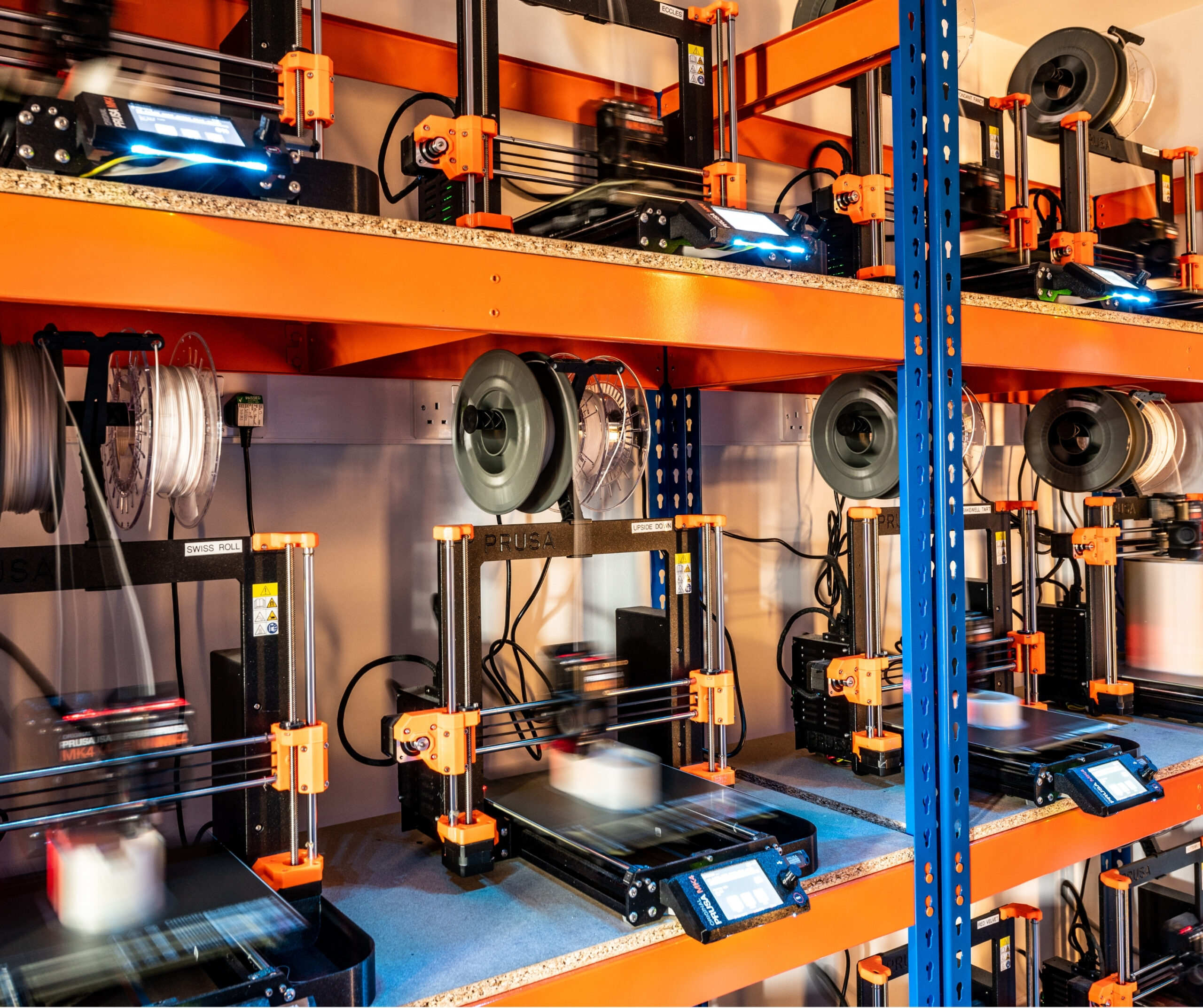10 March 2025
Retail Lighting Revolutionised

The Impact of Additive Manufacturing on Retail Lighting
Rethinking Aluminium in Retail Lighting

14 February 2024
In the push for more sustainable practices, the retail sector is shifting towards circularity, and is re-evaluating the environmental impact of commonly used materials.
This blog looks particularly at aluminium in lighting solutions and delves into the drawbacks of traditional aluminium retail lights, versus the potential of sustainable biopolymer blends. We’ll explore the positive contributions of biopolymer lights to a circular economy, and their role in reducing carbon footprint, energy consumption, and landfill waste.
Aluminium extraction and refinement processes contribute significantly to carbon emissions. It amounts to high levels of energy consumption and links to substantial environmental concerns. According to the International Aluminium Institute (IAI), Aluminium production generates around 1.1bn tonnes of CO₂ each year.*
The life cycle of aluminium lights, from extraction to disposal, demands substantial energy and resources. This intensifies the environmental toll it has on our environment. The end-of-life disposal of aluminium lights adds to the burden of landfill waste, with non-biodegradable materials taking centuries to decompose. So, it comes into question; is the low cost of aluminium lighting worth the impact it has on our planet?

Biopolymer blends, derived from renewable plant-based materials, offer a more sustainable alternative. They offer a solution to the energy-intensive production processes related to aluminium, as they are less energy-intensive to produce and are the economically viable choice. However, in many instances, the sustainable choice is typically more expensive than the standard Aluminium option and for many retailers, the cost perspective is key in decision-making.
Very little Aluminium is produced in the UK which means it has a high impact on the carbon miles from importing from abroad. UK made 3D printed biopolymer lights, however, do not generate anywhere near as much carbon from transportation as they do not need to be shipped overseas for UK stores.

Plant-based blends are typically biodegradable and recyclable. They help create a closed-loop system, that’s soil-to-soil- minimising waste and aligning with circular economy principles.
Biopolymer lights are designed with modularity in mind. Promoting a longer lifespan for the product and reducing the need for frequent replacements or unnecessary disposal. Whereas by their very design, aluminium lighting requires parts to be disposed of and replaced entirely, significantly increasing their carbon cost.

NORT GS
Sustainability is more important than ever. By embracing circular economy principles, retailers can:

GAIL’s Bakery
We encourage retailers to consider the switch from aluminium to biopolymer lighting. This switch isn’t just about a change in materials; it’s a narrative that communicates a dedication to innovation, circularity, and a sustainable future. The move allows retailers to tell a compelling story of added value and emphasise their brand’s role in building a better future.
10 March 2025

The Impact of Additive Manufacturing on Retail Lighting
31 January 2025

From Battlefields to Peaks:
27 January 2025

From University to Innovation:
24 January 2025

Compact Design, Big Impact.
24 October 2024

Shop Stories - From Vouchers to Variety